- Aug 14, 2023
3 Proven Techniques for Catching Summer Bass at Night
Nighttime bass fishing can be extremely productive if you choose the best lure presentations and locations. Use these techniques to catch more bass under the cover of darkness.
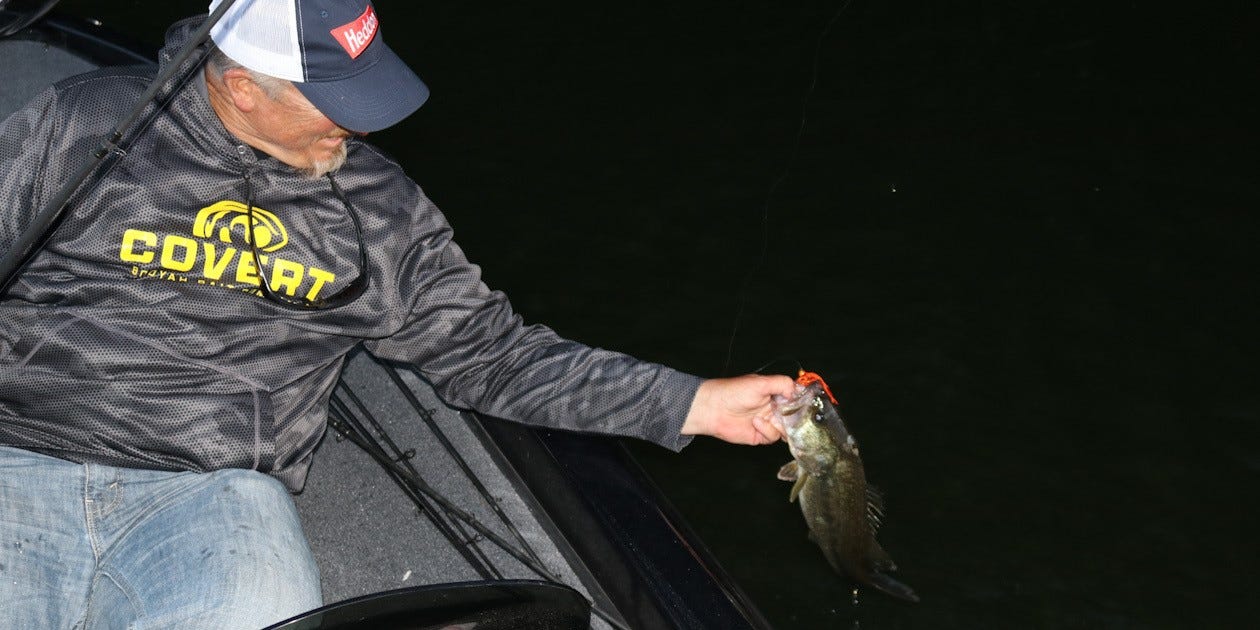

Night fishing offers offer undeniable advantages to bass anglers during the summer – among them more comfortable conditions and less competition from other anglers. Most importantly, bass feed heavily after hours this time of year, so you can enjoy excellent fish-catching action if you’re up for fishing at night.
That said, the bass’ daytime and nighttime locations and behavior differ, so it’s important to adjust your approaches for night fishing. These three strategies are time-tested and proven for catching largemouth and smallmouth bass at night.
Gurgle The Surface
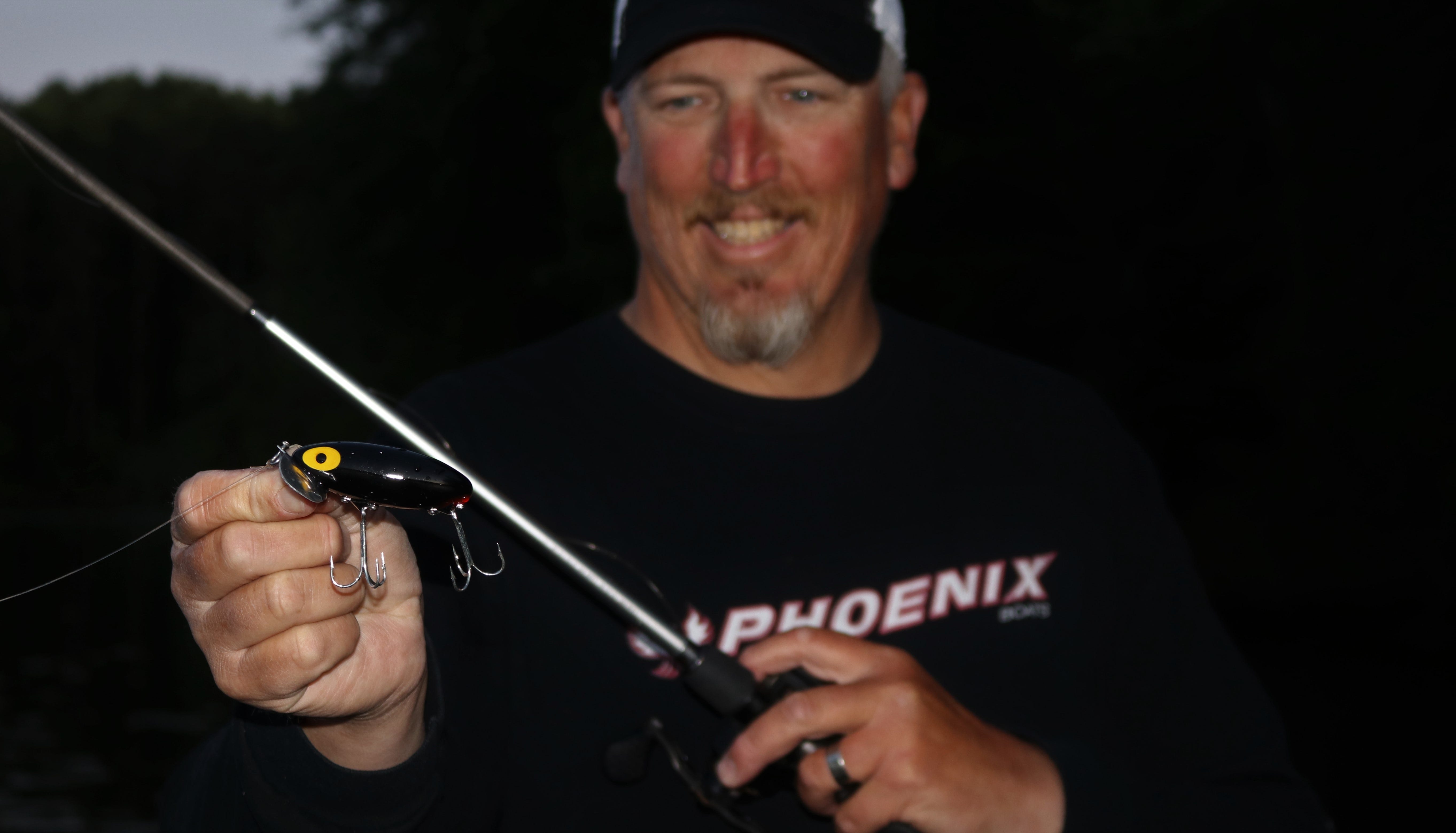

We’ll begin with an old faithful technique that continues to provide great summer fishing and produces unparalleled excitement on a calm night. Casting repeatedly into the darkness and gurgling a plug along the surface can nearly lull you to sleep, but it’ll about scare you out of the boat when a bass suddenly attacks.
Various surface lures can be used for this technique, but arguably none is better than a classic Arbogast Jitterbug, which creates a big gurgle and pushes out a wake as it wobble rhythmically across the surface. The larger Jitterbug models, both sold and jointed, allow for the long casts that are best for this approach and send out the most sound. Many diehard night Jitterbuggers insist on the 4 1/2-inch Jitterbug XL.
Steady is the name of the game for this technique. Fish often come from afar and zero in on the lure as it does its surface wobble. Because bass do follow lures and are often widespread on flats and atop humps, it’s important to work a lure all the way back and to remain ready.
One critical note for this style of fishing: No matter how vicious a strike sounds, don’t set the hook unless you FEEL the fish surge. Bass commonly miss topwater lures at night, and you don’t want to set the hook empty and have a lure and multiple treble hooks rocketing back toward you in the dark! Plus, a fish that misses often will hit again – less violently but more efficiently.
Bump the Bottom
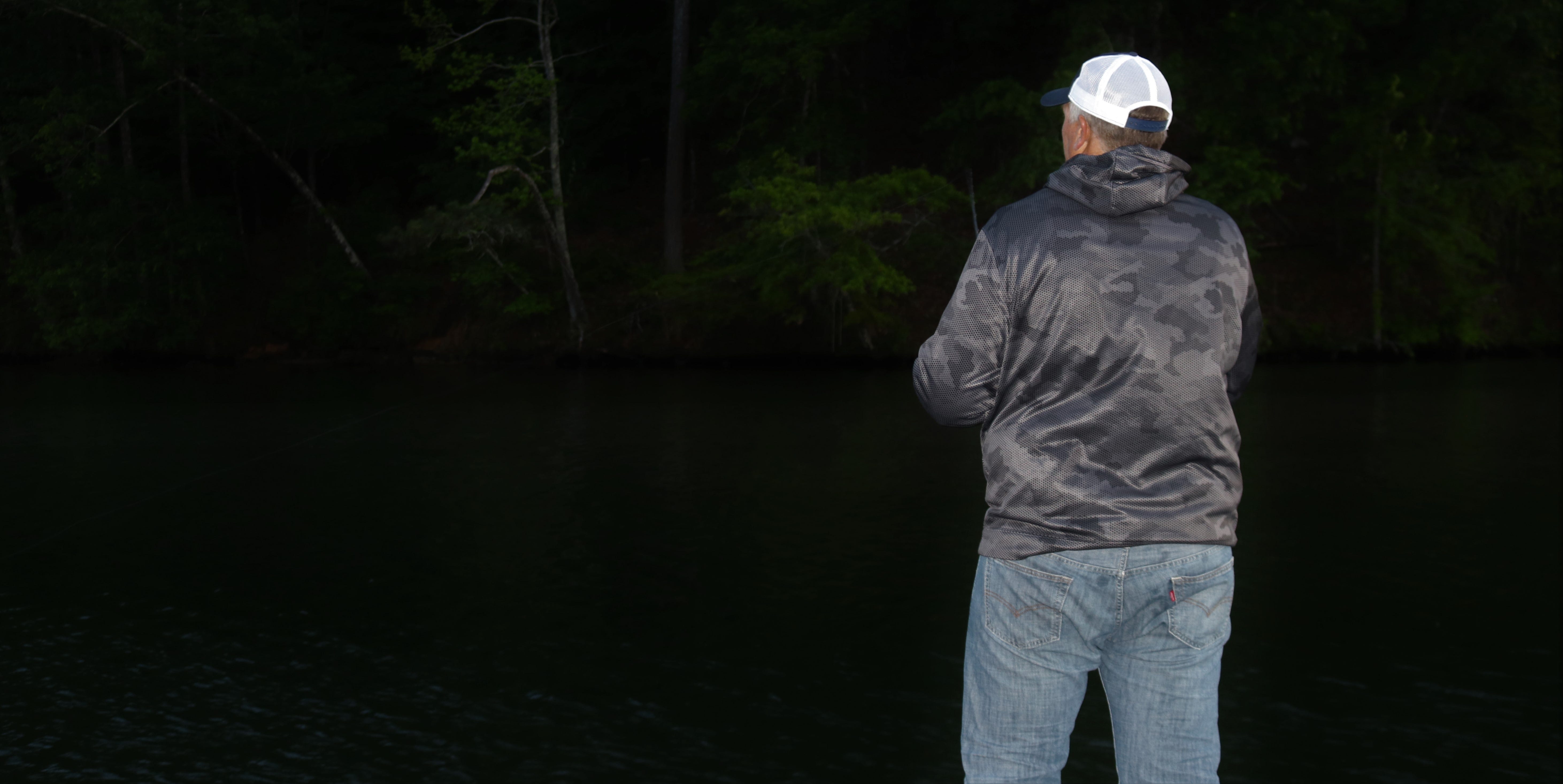

While calling bass to the top is thrilling and tough to top on calm nights when the bass are cruising shallow flats, going down after them will produce positive results more frequently and in a broader range of situations. Often, that means bumping or dragging the bottom slowly and methodically with a jig or a Texas-rigged soft-plastic lure – typically in a dark color.
A Texas rig allows you to work cover that’s atop a structure, such as a brushpile sitting on the high part of a hump. A classic Ribbontail Worm is extra good for the approach, with bass often thumping the bait right after it crawls over a branch and drops to the bottom with a wavering tail.
A football jig is ideal for dragging down points or over the tops of flat-topped roadbeds or big humps. A flipping jig or a Texas rigged Christie Critter works better for targeting tighter spots, often along the bank.
Key areas for bottom bumping and dragging at night offer shallow feeding zones that are close to notably deeper water, often near the main river channel or the lower end of a major creek channel. Good examples include a point that extends out to the channel, a hump that the channel wraps around or a 45-degree, craggy rock bank that’s adjacent to the river channel.
Send Some Thump
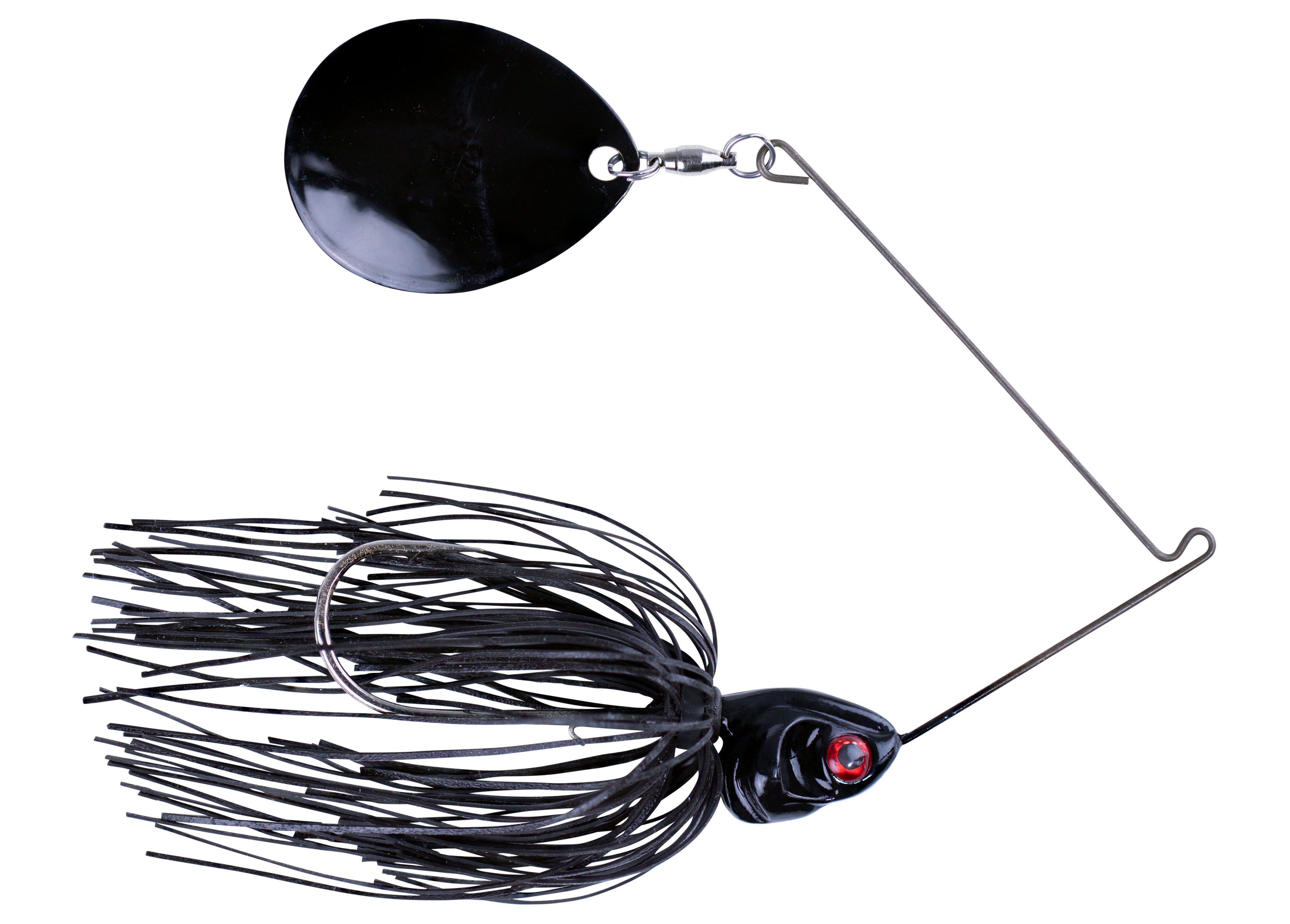

At times you need strong pulsing vibration to help fish find a lure and to prompt attacks, and nothing serves up that thump while offering and enticing night profile quite like a “night spinnerbait” with a big single Colorado blade. An oversized single Colorado blade creates more thump than any other spinnerbait configuration.
Much like gurgling a Jitterbug across the surface, the night spinnerbait presentation is slow and steady to allow fish to sense the vibration, emerge from hiding places and track the bait. Depending on the bottom depth, you might need to let the bait sink a bit before beginning your retrieve or move it gradually slower as it moves away from the bank or off the edge of a structural feature, so it works gradually deeper. Generally, a nighttime spinnerbait should track near the bottom or just above grabby, fish-holding cover, such as brush or submerged vegetation.
Key areas for night fishing spinnerbaits are similar to key bottom bumping areas. In fact, many are the same. Night spinnerbaits also work very well for fishing bluff banks where there are shelves or downed trees that provide shallow holding areas. By positioning the boat tight to the bluff and casting parallel, you can keep a spinnerbait in the prime zone through an entire cast.
A very good approach most nights is to have a bottom bait and a spinnerbait rigged and make an equal number of casts with each until the fish reveal their preferences. Sometimes either the subtle bottom presentation or the bolder thump will yield all the action. Other nights, both will produce, but you might notice all the jig or worm bites in one type of spot and the spinnerbait bites in another, allowing you to fish more efficiently.
5 Night-Fishing Tips
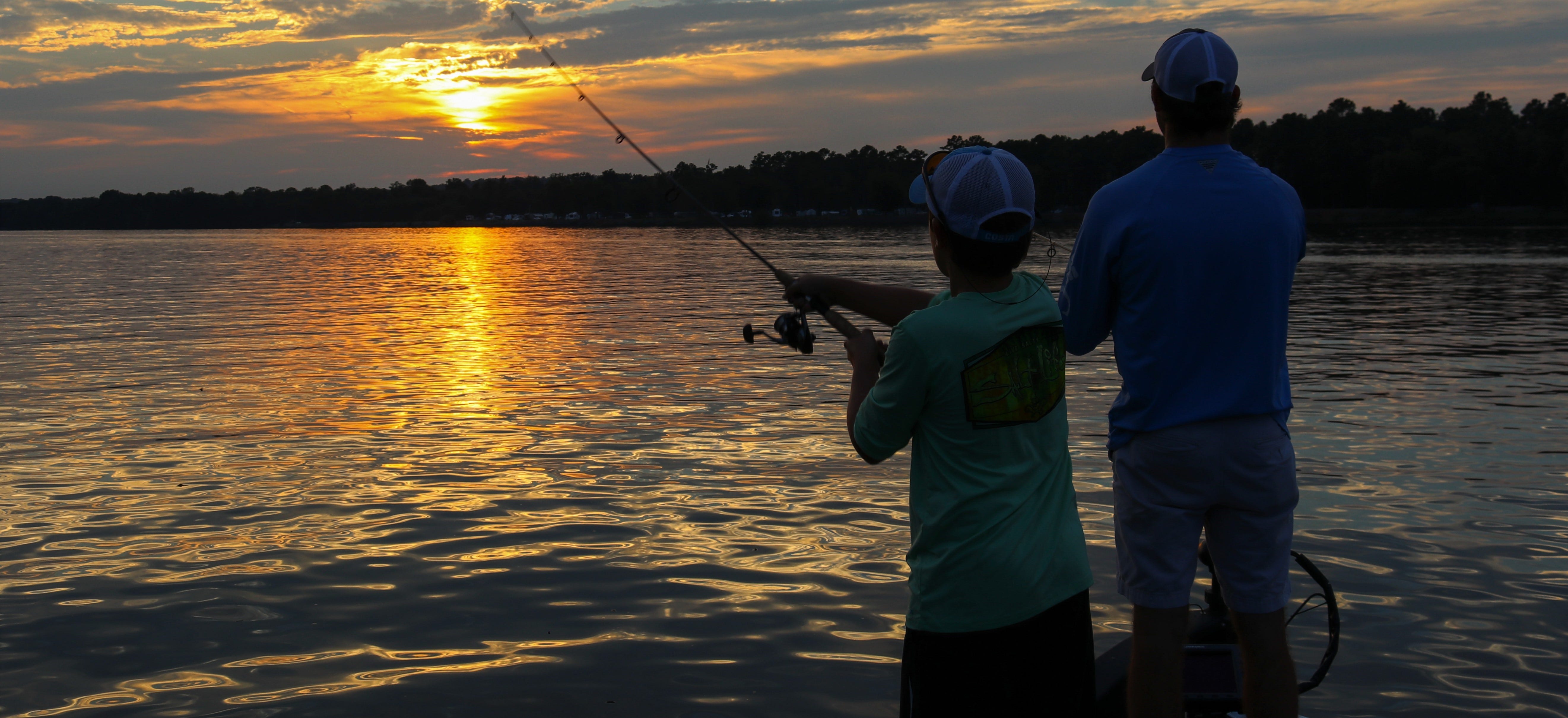

- Start in the Daylight – Beginning a night on the water an hour or so before sunset allows you to get acclimated, scout obstacles and see how fish are positioned, which makes for more productive fishing and easier navigation once it gets dark. A bonus, some summer evenings, comes in the form of an explosive topwater bite just before dark!
- Wear a Headlamp – A simple headlamp allows you to illuminate where you are looking, hands-free, which is ideal for tying knots, unhooking fish and checking overhanging cover before making a questionable cast. Keep it turned off most of the time, so your eyes stay better adjusted in the darkness, and remember not to turn and look directly at a buddy when your light is on!
- Think Shallow – There’s almost no such thing as too shallow at night. Bass will move tight to the banks and very high on points and humps. Deeper water generally needs to be nearby during summer, but if a bass’ back can stay wet, the water probably isn’t too shallow.
- Visit All-Night Lights – Watch for those spots beneath docks, bridges, lit walkways and more where some type of light stays illuminated and hits the water all night long – especially those that are apt to be lit every night. The lights draw plankton, which starts the food chain parade and makes these key spots for game fish of all kinds.
- Limit Running Time – No matter how good your electronics are and how open a lake is, there’s still stuff you can’t see at night. It’s best to work in a relatively small area and spend more time fishing than running around the lake at night – and when you do need to run, make it more of a jog!
Don’t Sleep on Arsonist
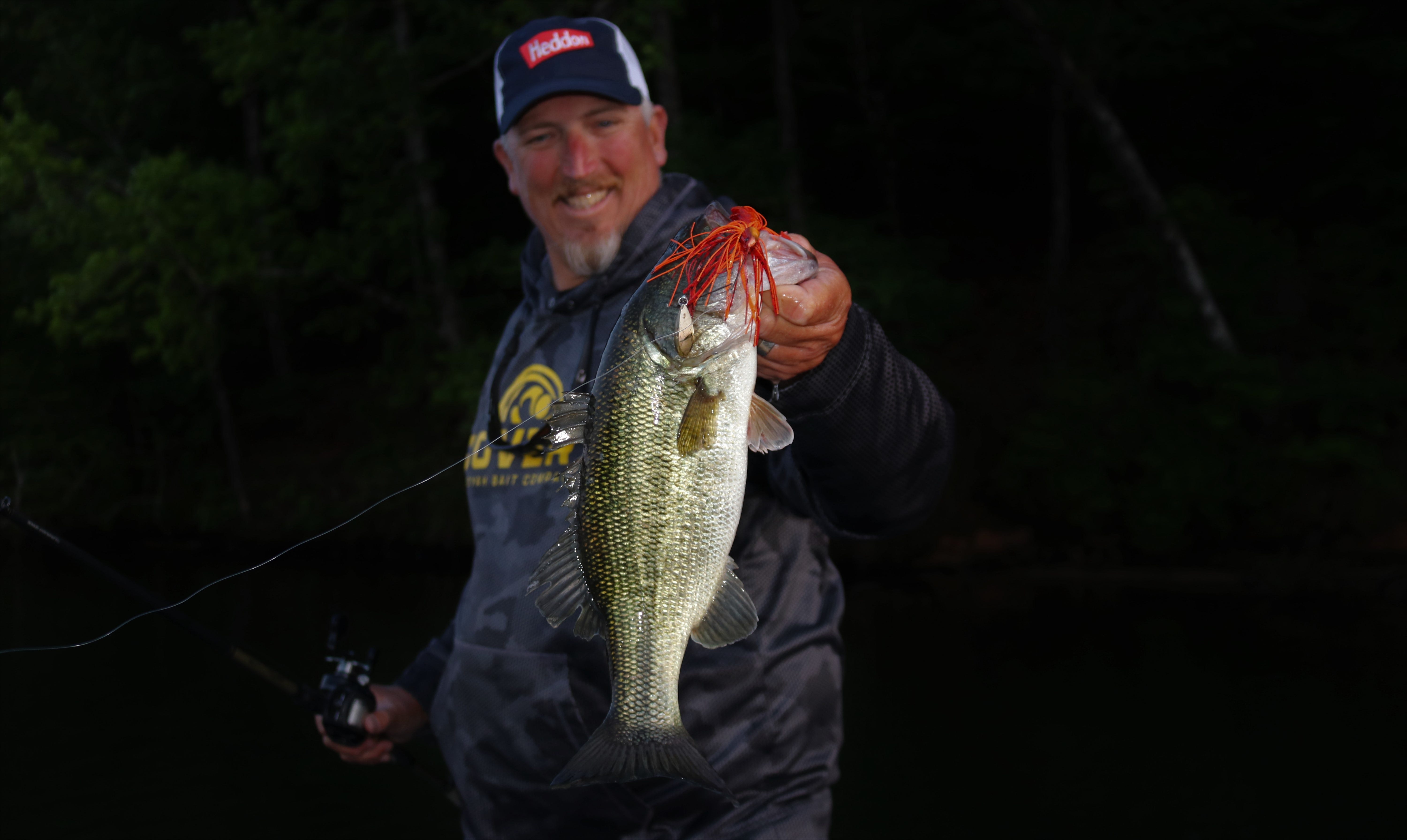

North Alabama guide and bass pro Jimmy Mason said he started thinking about night-fishing, the moment he saw Arsonist, a fiery Lurenet-exclusive color for select BOOYAH and YUM lures that was released earlier this year.
Red and orange, with a blend of fleck that includes black, Arsonist was created largely to appeal to cold-water fish that are relating to red caws. Red, though, is among the absolute best colors for night-fishing lures, and the black fleck adds visibility.
Adding appeal, Arsonist is available in 1/2-ounce Single Colorado BOOYAH Covert Spinnerbait, which is very well suited for the night fishing. An Arsonist Spine Craw makes an outstanding trailer for the same spinnerbait and can also be Texas rigged for bumping bottom, and the Craw Chunk provides an Arsonist option as a jig trailer.



